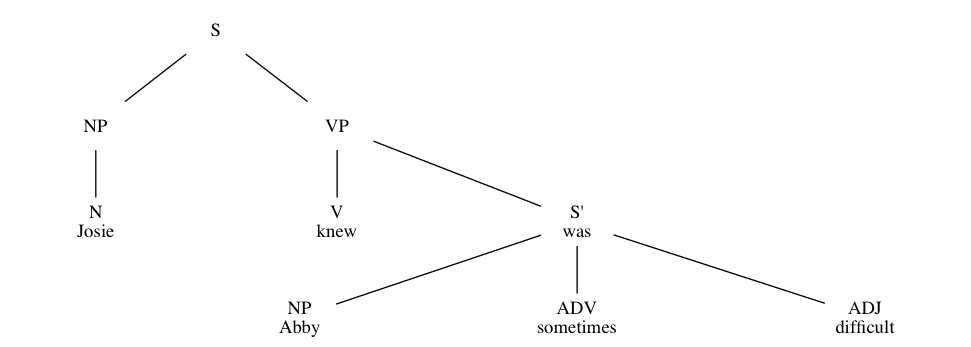A meta-language for simplifying the process of making tree diagrams in Graphviz
The input file specifies a tree graph in Graphviz using a simplified syntax. This syntax makes it quick and easy to model the tree without having to memorize or lookup the Graphviz syntax.
There are five basic components in the input file:
- Entire trees, denoted by a line containing only the word
treeand no indentation - Nodes, denoted by a label following some level of indentation by tabs.
- Annotated nodes, like above with but an annotation following the label after a separator
- - Parent-child relationships, denoted by the increase in indentation level from one line to the next
- Comment lines, denoted by no indentation and any content other than just
tree
The actual parsing of the input file is a Python script, so make sure you have Python 2.7 installed. The output is generated by GraphViz, so make sure you have that as well and can run dot from the command line.
If you are on a Mac computer, you can install with the following:
brew install python graphvizIf you are running Linux, you will only likely need to install GraphViz, as Python should be included already.
apt-get install graphviz
# or
yum install graphviz
# or better yet 😉
emerge graphvizThe following is a basic sentence diagram with the parts of speach as nodes and the words of the original sentence as annoted leaf-nodes.
Josie knew Abby was sometimes difficult.
tree
S
NP
N - Josie
VP
V - knew
S' - was
NP - Abby
ADV - sometimes
ADJ - difficult
Let's run it with the included run script:
./makeTree.sh example.treeNow, let's look at our pretty graph!
